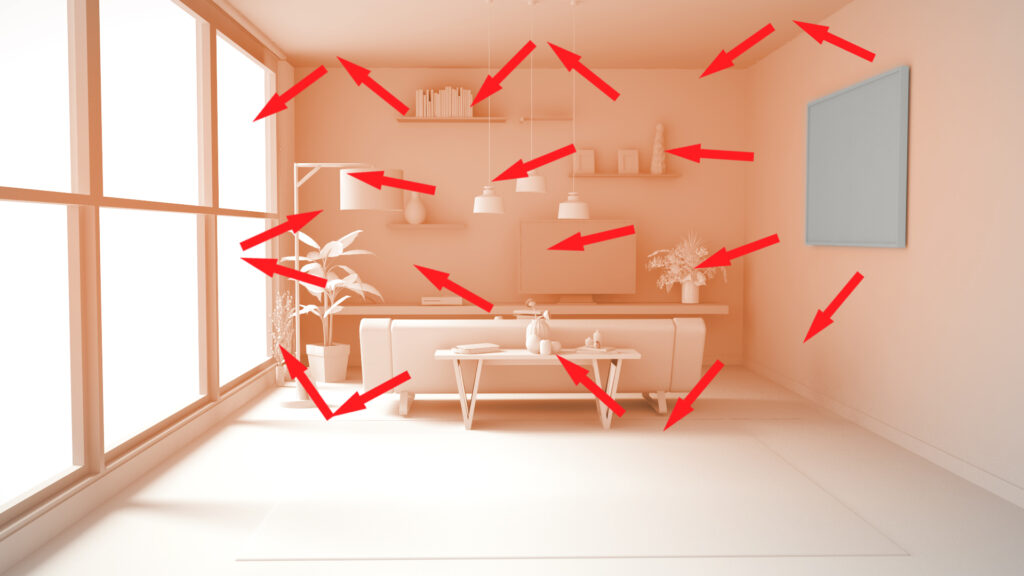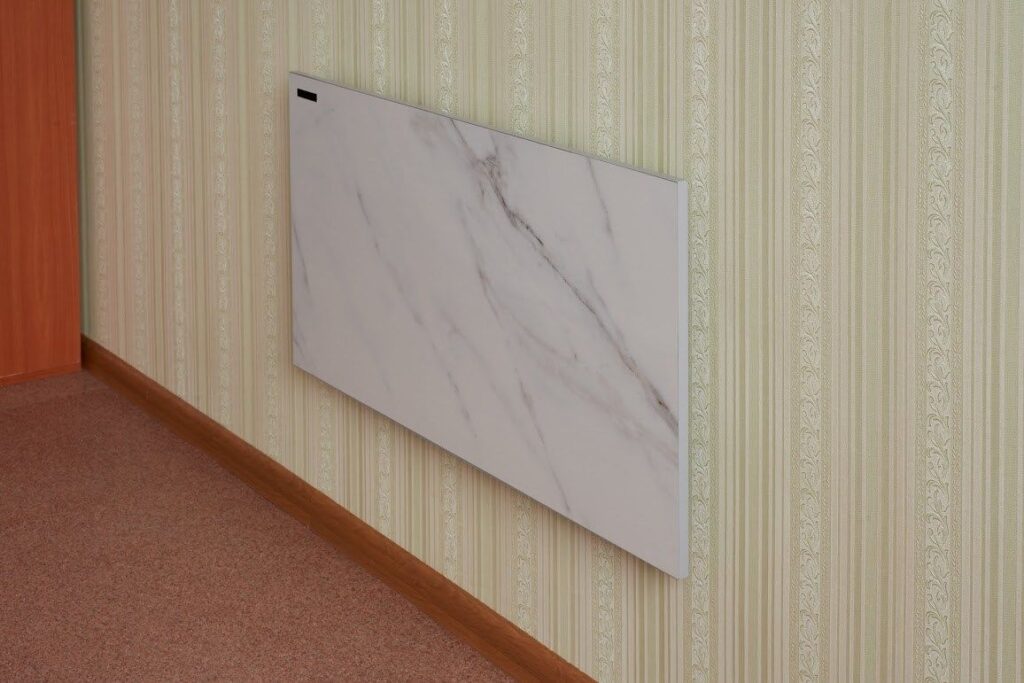The protection of our environment is of utmost priority in the world we live in today. Traditional gas burners have an efficiency of less than 50% as well as they emit carbon monoxide and other dangerous emissions that are created during the process of burning and combusting fuel. Infrared heaters are completely safe both for outdoor and indoor use, they do not make any noise, do not emit greenhouse gases or bad smells, as well as do not demand ventilation. Infrared heating technology is a dramatic change in many aspects compared to the standard heating methods, including its environmental benefits more than anything else.
How do infrared heating panels work?

As opposed to conventional home heating methods, which include traditional convectors and fan heaters, infrared panels are using their far-infrared heat for heating the surrounding objects in the room directly instead of heating the air around them. The method is very similar to the way we warm ourselves in the sun, as it directly heats your walls, furniture, and even your body.
As the process of natural heat conduction takes place from these rigid objects, it also warms up the remaining part of your room at a smooth, constant rate at which you will feel pleasant to be around and never stuffy or damp. As a result of this consistency, there is much less likelihood of mold growth problems occurring, and there will be zero cold spots, which might be the case with standard forms of radiant heating. Based on the way infrared heating panels operate you will find out that they are extremely energy efficient and therefore much more environmentally friendly compared to basically any other type of heaters available for your home. You may indeed spend a bit more on the panels at first, but as their usage rise unavoidably, the cost of purchasing them will go down.
Infrared Heating Panels compared to traditional heaters
It has been discovered that infrared heating panels consume energy less than half of that used by conventional AC units. When measured in kW / h, the necessary electrical energy to provide power to a standard electric fire is about 2.0 kW / h. Electric fan heaters also require about 2.0 kW / h, whereas a traditional convector, and an oil-filled heater, use somewhat less at 1.0 to 1.5 kW / h. As a comparison, infrared heating panels use between 0.29 and 0.8 kW/h of electricity according to the panel size. However, due to the fact that infrared heating panels lower energy usage as well as save money when compared to conventional methods of heating, these panels affect the environment significantly.
Free from carbon emissions

Making your home more energy efficient may also be a good place to start reducing carbon emissions. Considering this in combination with other measures that reduce waste, including the installation of low-power LED light bulbs and lamps, along with proper insulation and tensile strength, infrared heating panels will help you significantly lower your carbon emissions and carbon footprint.
In order to ensure that your infrared heating panel consumes as minimal electricity as possible, which results in a reduced carbon footprint, you may use an electronic thermostat to regulate the heat that is produced. With a programmable thermostat, you can adjust its settings to avoid wasting energy when you do not need it. For example, it can be programmed so you have different temperatures in different rooms, plus it can turn off your infrared heating panel when the ambient temperature gets to a specified level. Consequently, your infrared heating panels will keep working until the temperature in the area of your thermostat has reached the one you previously set. By doing this, you will reduce your energy consumption. However, if you lower this setting by just 1°C, you can usually reduce your heating consumption and thus your carbon emissions even further, by up to 10%.
Infrared heating panels consist of recyclable materials
Infrared heating panels contain materials that are 100% recyclable. There is aluminum on the surfaces, which is also used for beverage cans, kitchen utensils, and airplanes. Aluminum as a material is completely recyclable, extremely durable, plus it can be repeatedly recovered and recycled. In fact, roughly 75% of the aluminum produced in the U.S. continues to be used today, which makes it the most recycled material in America. In addition, the frames covering infrared heating panels are also produced from aluminum.
The size of the infrared heating panels matters

The best heating solution for efficient energy-saving is the infrared heating panels. However, they are only effective if you have picked the correct size. There are many different sizes of panels. You must choose the correct size of panels in order to make sure the room will be heated entirely and that you will avoid wasting energy. This means that if you buy a panel, which is too small to be used in the intended room, then the room will not be adequately heated. On the other hand, in case you buy a panel too big for a smaller room, you will only end up wasting energy and space. Finally, once you buy the proper panel, it is necessary to install it in the proper place of the house. Visit www.futofolia.hu to find your suitable infrared heating panel.
Infrared heating panels can be easily installed to your existing heating system, which will enable your home to maintain a comfortable temperature while keeping your energy costs low. You also need to have a built-in heating control feature so that the infrared heater automatically switches off when the optimum temperature has been reached, which will allow you to make the most of your savings.
The installation of infrared heating panels in your home is definitely one of the best investments you can possibly undertake for your home. If you install them, you will be able to save money, to keep your health in good shape, plus it will make your home a more convenient place to live in. More useful information about Best Infrared Heaters, you can find here.







